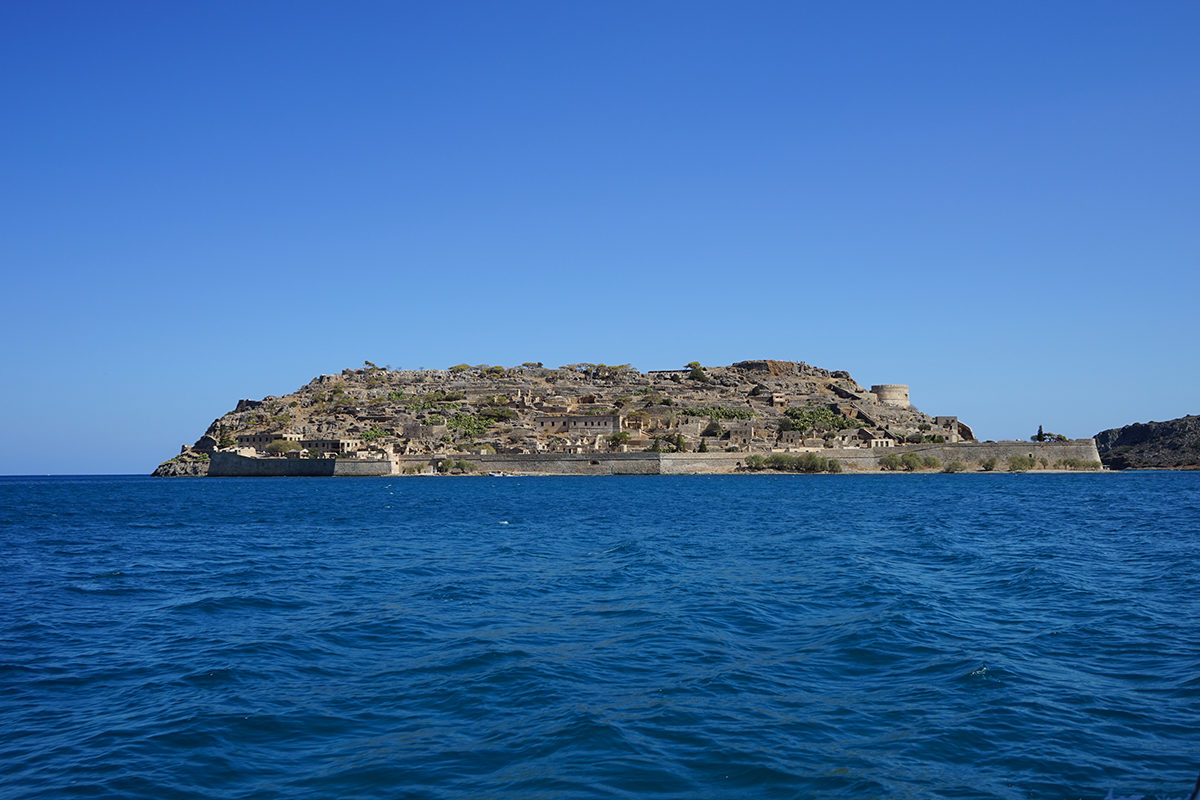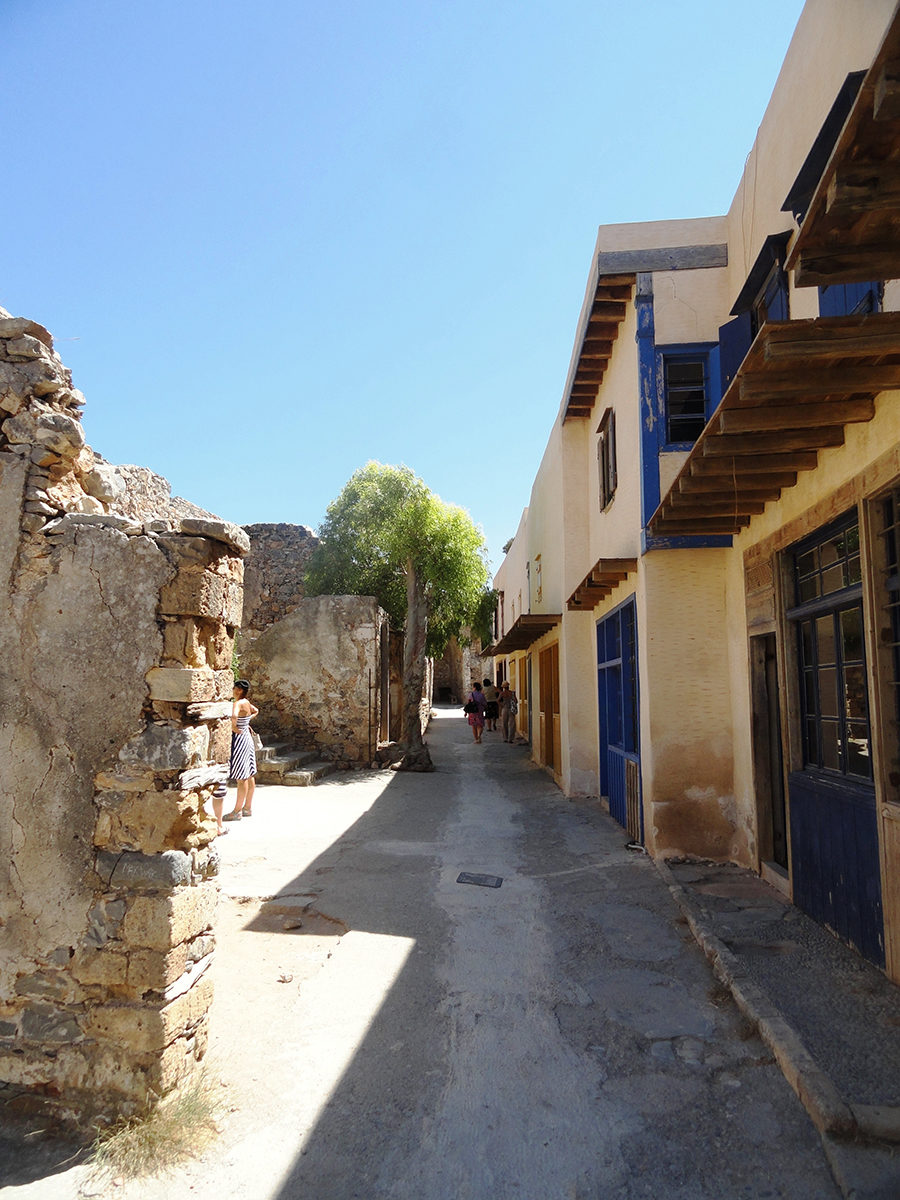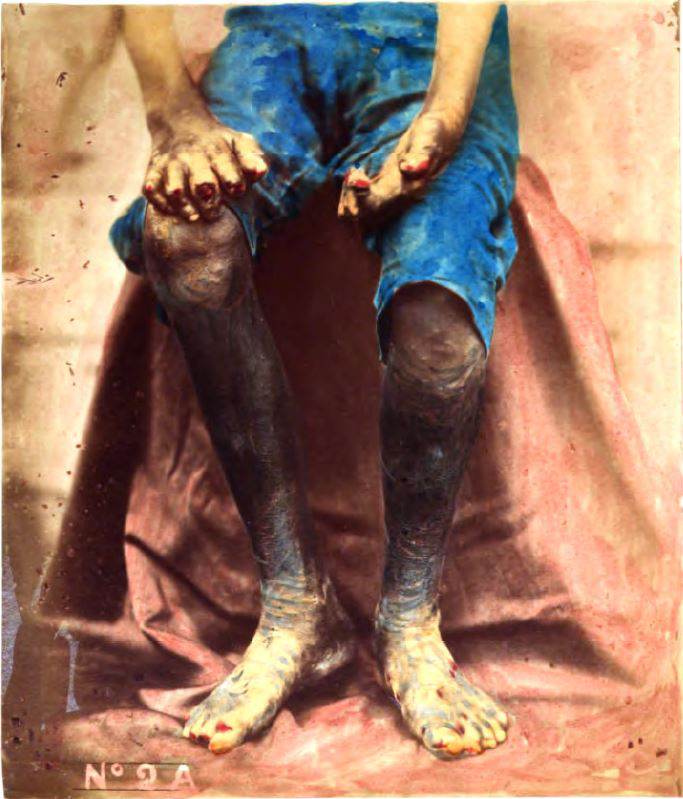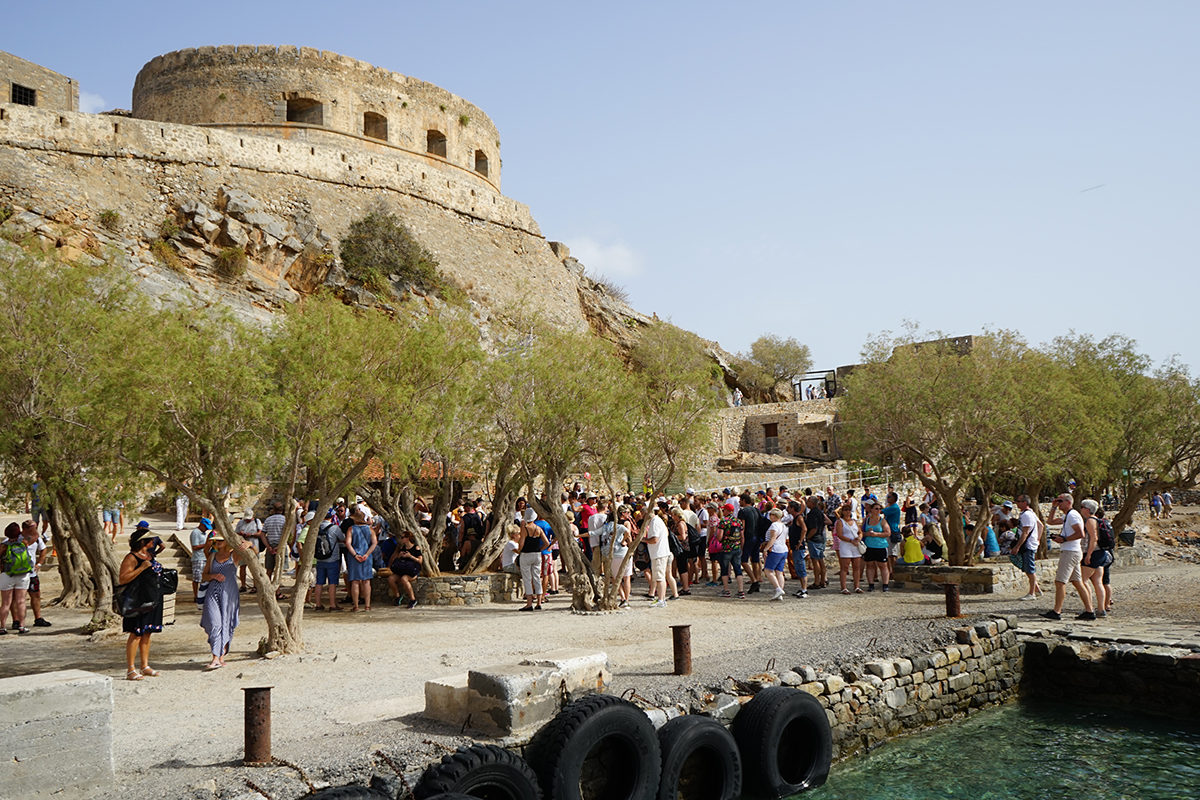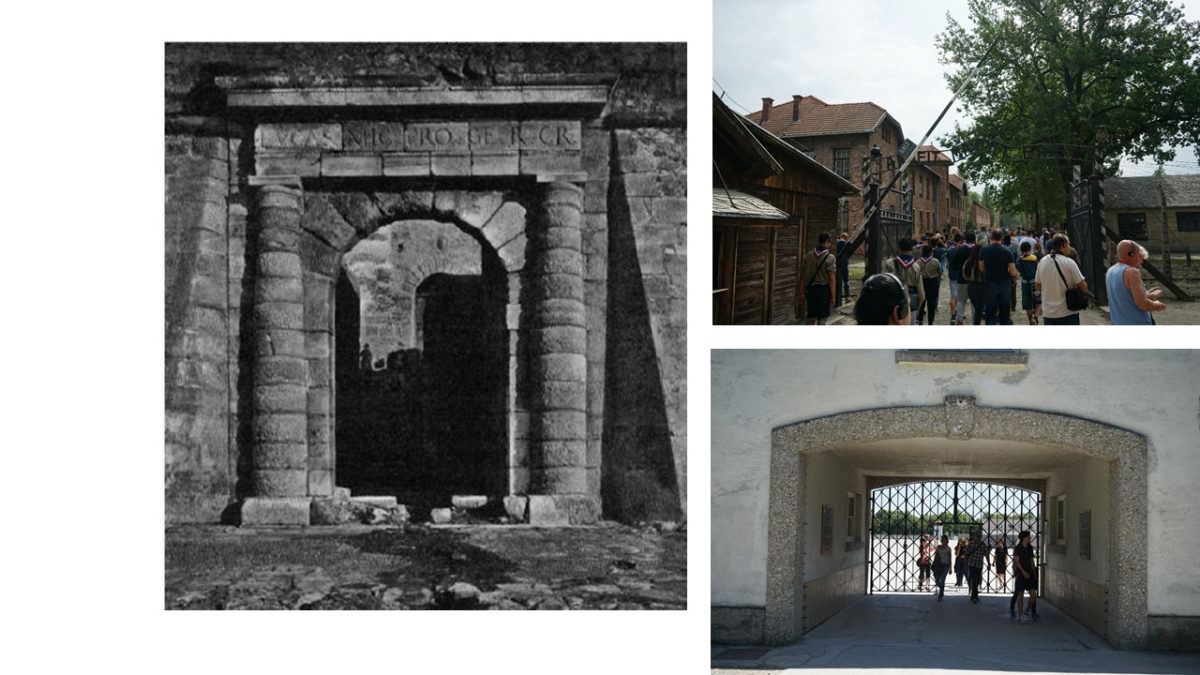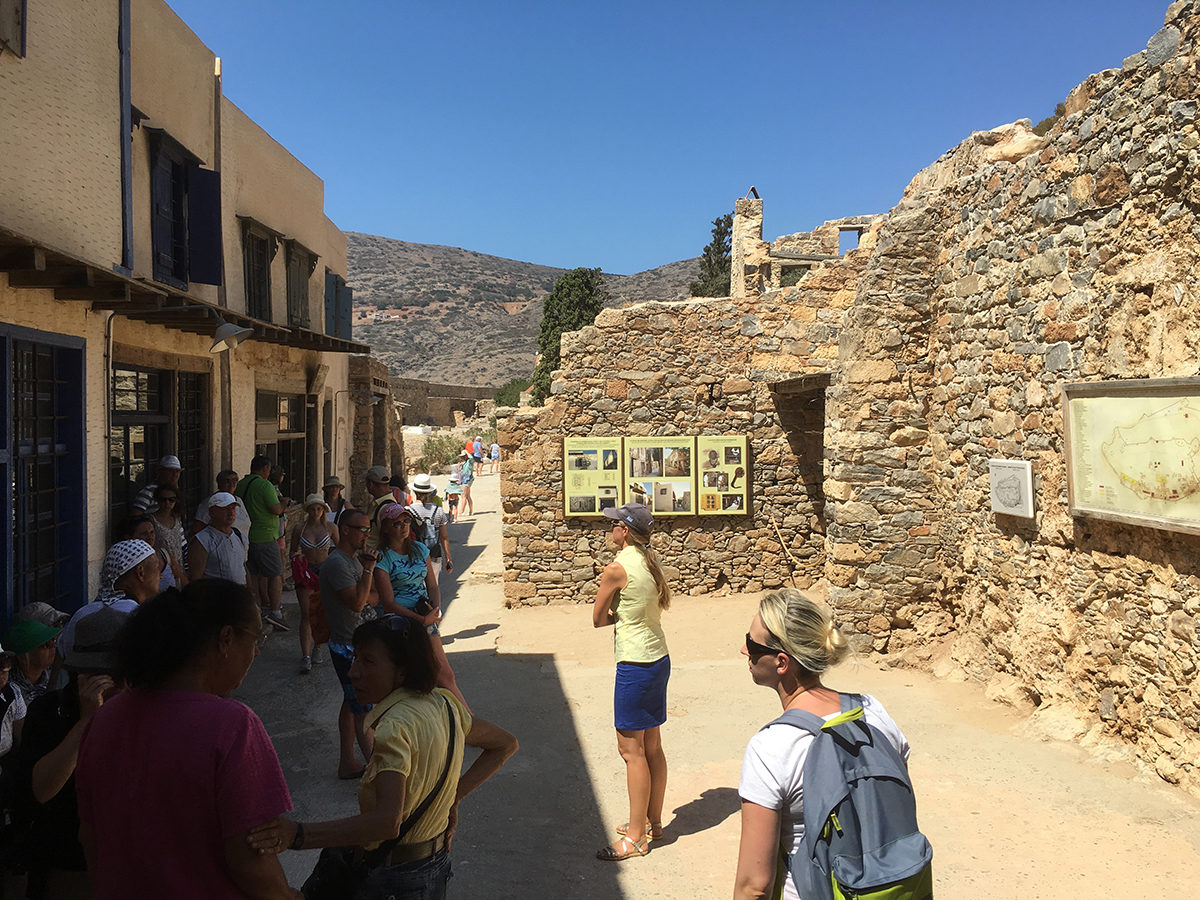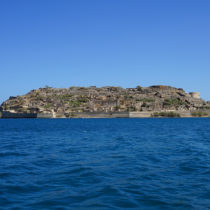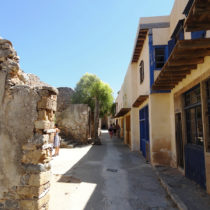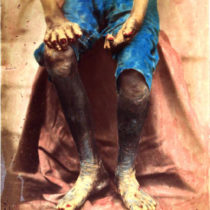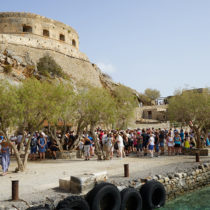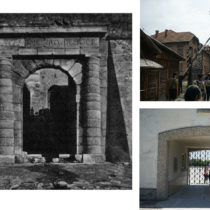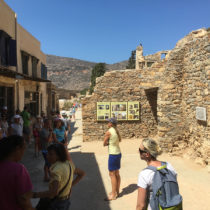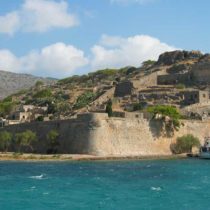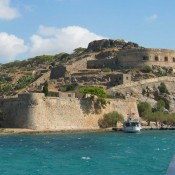It’s October; a nice and sunny afternoon. I am sipping my Earl Grey tea, sitting on the veranda of the luxurious hotel in Elounda, Crete. The second day of the meeting with the Ministry of Culture officials has just concluded, leaving topographic maps, historic images and the challenging UNESCO World Heritage Sites application on the table (note 1).
Opposite, in the most panoramic view possible, floats Spinalonga. A small island in the Gulf of Elounda in north-eastern Crete, in the Lasithi regional unit. The name of the island was fashioned by the Venetians, probably after the misheard direction “eis tin Elounda” (to/towards Elounda). Technically, though, this name is not valid nowadays. The Greek State issued a presidential decree in 1953, changing it to the antique-like “Nea Kalydon”, after the larger island that lies at its south. Even though the reasons for this decision are unclear, people relate it to the fifty-year use of Spinalonga as a leper colony, and an impertinent attempt to force oblivion on the dubious tactics of treating leprosy in 20th c. Crete.
After the meeting, the question lingers in my mind; how can you manage such a contested past, what do people understand and experience from the leper colony now, and what should we aim at? (fig. 1)
Island archaeology
Spinalonga, however, is much more than the leper colony; its historic palimpsest now being one of the major advantages on the road to inscription on the World Heritage List.
Almost 450 years ago, B. Zampeschi visited Spinalonga on behalf of the Serenissima Repubblica di Venezia, to examine their plan of fortifying this small island as part of a larger naval fortification system in Crete, after the loss of Cyprus to the Ottomans. He mentioned an ancient wall surrounding Spinalonga and a few other ruined edifices. The Venetians went forward with their plan and fortified Spinalonga employing the latest technology in defensive architecture, the “bastion front system” (fronte bastionato), designed and implemented by two famous military architects of the era, G. Bressani and L. Orsini (1579-1586). Thus, the small island was turned into a significant checkpoint in the Gulf of Merambelo, to protect the Cretan hinterland and outgoing trade, including olive oil cargoes heading to Marseille for its famous soap industry.
In 1715 the island was surrendered to the Ottomans. It retained its military character but the new community also became active in the trade of local goods, such as honey, olive oil, olives, carob, almonds and salt. Steadily, a vibrant settlement emerged on the western and southern sides of Spinalonga, a significant percentage of which is today restored and preserved. The 1890 census reveals that more than 1,000 people lived on Spinalonga at that point, forming a predominantly Muslim, independent borough. However, towards the end of the 19th c. the island was gradually abandoned due to various hostilities and it was finally evacuated in 1904, when the Cretan State decided on the establishment of a leper colony on the island (fig. 2).
Foucault’s island
Leprosy is an ancient disease recorded in ancient Greek, Latin, Middle Eastern and Indian documentary sources, and in skeletal material from at least the 3rd c. BC. It is in fact a chronic inflammatory disease of the nervous system that causes disfigurement of the bones and tumour-like growths on the skin and in the respiratory tract, causing the characteristic coarse voice of patients.
In the Bible (Leviticus 13: 45-46), leprosy is a paradigmatic disease, a debilitating influence of sin on the body and thus an internal source of uncleanness. The infected should live excluded, outside the city in shanty-towns (note 2) but should also be cared for, as a way of redemption for the healthy (Born 2015: 351-383) (fig. 3).
With the emergence of the nation-states in Europe and the dawn of the modern world things changed. The new political subjects attempted to organise the urban environment and with it aspects of the public and private lives of their citizens. The process could be observed through various strategies and technologies, or “biopolitics” to use the Foucauldian term (Foucault 1997), employed by the newly-born authorities. Through these, nation-states aimed to govern populations and their collective relations but also the individual bodies of the citizens. The specific care for their wellbeing and safety mandated a different approach to disease. Lepers, easily identified among “the healthy”, became a public enemy. They were removed and secluded in specific institutions, invisible to the public eye, for the public good.
In Crete, as Born’s research reveals, political factors and the catalytic intervention of Danish dermatologist Edvard Ehlers, strong defendant of the seclusion theory for holding back the “endemic disease”, led to the establishment of the leper colony of Spinalonga and the deportation of patients to an island without any infrastructure apart from the abandoned Venetian and Ottoman architectural remains. “Even as a pitiful condemnation, even as a grave it is still insufficient” notes the Governor of Lasithi in his letter to E. Venizelos in 1927, at a point where lepers from all over Greece were being shipped to Spinalonga, after the union with Greece (1913).
Worse than their displacement, the infected and their families were branded with a social stigma, as heavy as their physical burden (Goffman 1986). A stigma that expelled them from the world in which they were living, casting them socially into a secluded island. A prominent exile, E. Remoundakis (2012), notes that the people deported to Spinalonga had their names erased from the registry of their hometowns. Lepers were not dead after reaching the island, it was as if they never existed.
The tragedy of the life on Spinalonga is depicted in T. Kornaros novel Spinalonga: Ad vitam (1933) that describes the case until the 1930s, when the arrival of some educated patients gradually altered the conditions. At that point, a sense of solidarity was cultivated and a community emerged that protested and demanded better conditions for their life in exile.
Steadily after that, the heterotopic condition of the lepers infected even more of the surrounding social and economic landscape. They received larger compensation from the state that became a significant asset for the communities on the opposite shores. The latter gained from the lepers selling goods (mainly food and clothes) and services, or accepting gifts, as a significant number of new-borns from Plaka, Elounda and other nearby settlements were baptised by lepers.
Modern management and perceptions of Spinalonga
As soon as the lepers left Spinalonga, in 1954, several players stepped in on the island commencing a somehow awkward management process for the site. In the 1950s, there were thoughts of converting the island into an asylum for patients with mental illnesses; an idea promoted by the local communities that saw their profits drastically diminished after the evacuation of the leper colony. During the military junta in Greece the island was severely looted, stripping it of furniture and building material, which was used in the new hotels being built at that time on the opposite coast to host the developing mass, summer tourism. What is more, up until the 1990s, several proposals were put forward, mainly by the local authorities, to turn Spinalonga into a cultural centre with touristic characteristics; luckily none of which went through.
In 1976, Spinalonga was scheduled as an archaeological site by the Ministry of Culture and at the end of this decade most of the buildings related to the leper colony were demolished, in an attempt to diminish the physical remains of the stigma. Following that, a number of restoration works commenced on the Venetian walls and the Ottoman settlement up until today, establishing the contemporary “monumental” character and image of Spinalonga, prominent when you visit the island, accessible to the public since 2000.
However, apart from the archaeologists, art has played an important role in forming our perception of Spinalonga, through several representations in literature and cinema. In these works of art (note 3), a number of specific loci can be identified which steadily became established in the public view of the island. According to those, Spinalonga was a place of isolation, of tragedy and hardship but also of romance and unrequited love (Lekakis et al. forthcoming).
And even though these might have been important parameters in the lives of the lepers in exile, the sensationalised depiction and the intention to create an atmosphere of sorrow and compassion in the representations somehow veils the elephant in the room: the fact that these people were arrested, taken away from their houses, and exiled bearing something much heavier than a disease; they were struggling with the social stigma of leprosy, manufactured in the modern rules of life that distinguished them -and their families- from the greater society, and condemned them to a solitary limbo. A predominantly political issue.
This version of Spinalonga, where misery is aestheticised and sorrow mythologised seems to be turning the island into a pop, ahistorical product for mass consumption, responsible for the majority of visitors to it nowadays. According to an unpublished piece of research (note 4), 22% of the interviewees visited the site because of Hislop’s book and the relative TV series, while 40% of them said that they were acquainted with the ‘historical facts’ of Spinalonga through these two artworks, before visiting, and 24% through random on-line searching.
Walking along the opposite shores nowadays, local communities seem to be investing in this sorrow enthusing, tourist-friendly version of Spinalonga, instead of the monumental version that actually one encounters, when visiting. It might well be a wise prioritisation, since today Spinalonga is the second most visited site in Crete after Knossos and the 6th in Greece, with estimations of over 350,000 visitors per year (fig. 4).
The dark matter of Spinalonga
The tour guide on Spinalonga speaks in a loud voice to a group of middle-aged Americans. “This gate was called Dante’s gate. Because those who entered could never go back. It was written on this wall: Abandon all hope. How are you feeling today, are you going back to your hotel?” Her group is startled. Nonsensical and completely false a piece of information as it may be, the provocation succeeds in sensationalising a condition that the visitors are familiar with. The gate is there, the represented/aestheticised Spinalonga exists in their minds, their experience is animated. However, these ahistorical provocations that relate to the constructed feeling around the site do not concur with the historic facts: there was no such name for the southwestern gate of Spinalonga, nor any inscription at the side of the gate. Maurice Born, the first researcher that visited Spinalonga, shortly after its evacuation, confirms that he only knows of one painted inscription in Spinalonga, the “boulevard of pain” on the façade of a house across the Porta Maestra, the main (northwestern) entrance of the island.
So if this is the case, if people do come to visit the aesthetically represented Spinalonga of the artworks bypassing the political connotations and the monumental context, what should we do in terms of management? Spinalonga is an archaeological site but also holds—mostly intangible—traces of a contemporary tragedy that has been appealing to a large international audience, judging from the visitor numbers that grew exponentially in the last decade.
Remoundakis (2012: 341) believed that “someday, humanity will prevail on earth and justice will be made, ameliorating the deadly actions and failures to act, voluntary or not. And then, as the true and honest folks go to Dachau & Auschwitz etc. and kneel and try to wash away with their tears the shame for whatever has happened there, the same will happen to the small island of Spinalonga, consecrated by inconspicuous martyrs, the unfortunate lepers”.
I feel that this suggestion, the parallelism between Spinalonga and concentration camps contemporary to the leper colony, envelops a number of issues that we should immediately turn to, especially at a time when Spinalonga’s nomination is being examined for potential inscription on the World Heritage List. Far from the cannibalistic exploits of dark tourism, springing up across Europe and the rest of the world, Spinalonga -aside from its archaeological character- can also be declared and managed as a site of historical memory. A heritage management option that will protect its multiple pasts, but also does justice to this exiled community. A site where visitors will be empowered to learn about the lepers and the state policies of treating people with social stigma in (Greek) history, whether these be of biological origin, as in the case of leprosy, or of pure social and political trajectories.
Today, this could be considered much more crucial than an engaging and informed interpretation of historical issues. Regretfully, insular isolation as a political tool for controlling bearers of other social stigma is not a practice we left behind in 20th c. biopolitics. The practices at Spinalonga evoke the contemporary tragedy on another side of the Aegean, where people are still being detained in limbo zones for the greater good, and—in some cases—exploited economically; they wait for a cure that will allow them to go forward in a better place, since their past ceased to exist.
Spinalonga has been a hotspot for the dispossessed in the 20th c., it remains up to us whether we will address the nefarious acts and their contextual meaning in the past and present, or rest on the popular imagery and the economic resources of its growing visitor numbers.
Dr Stelios Lekakis
Archaeologist, CHM Consultant
McCord Centre – Newcastle University
